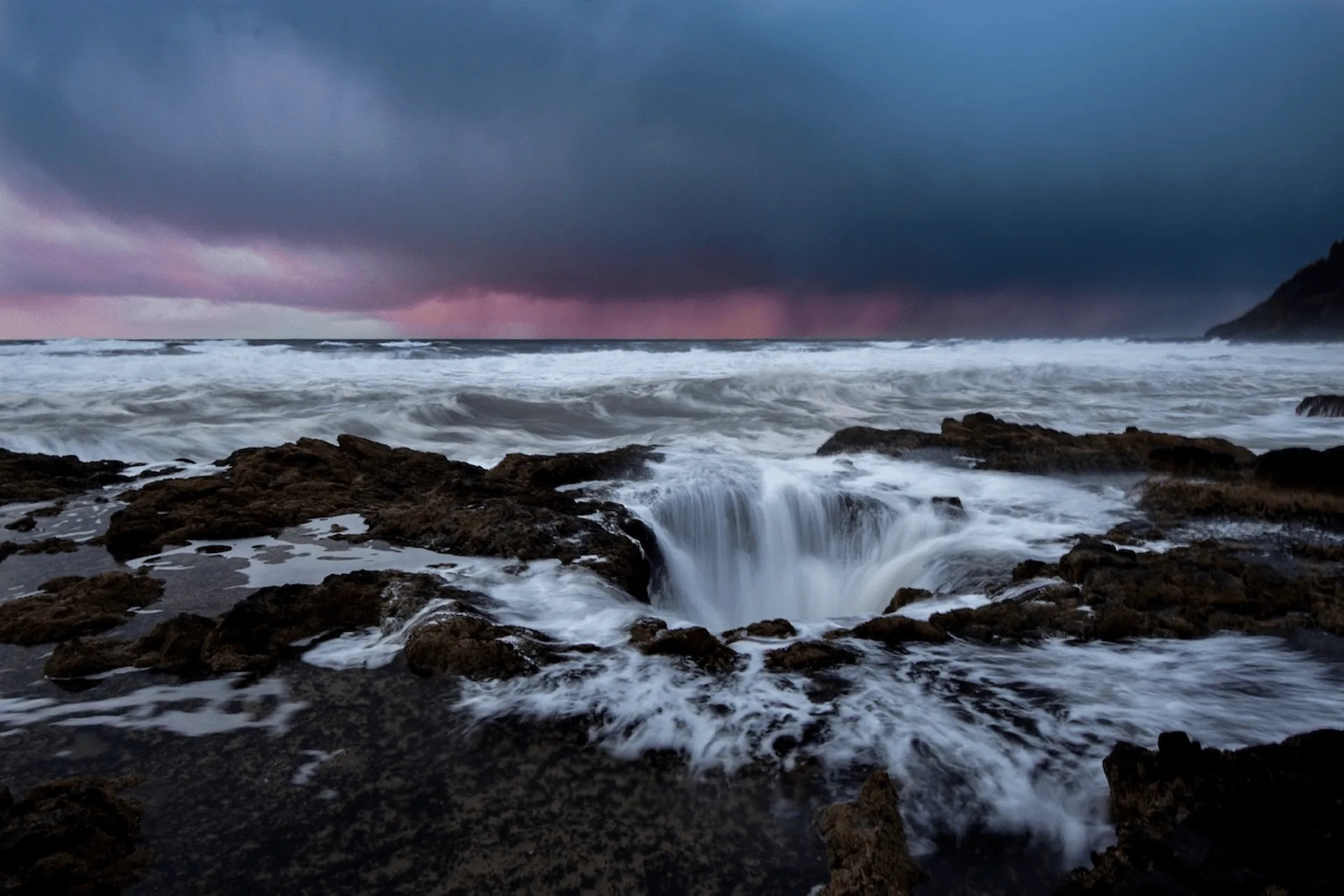How NOAA helps Communities Weather Hurricane Season
Climate change is worsening the effects of hurricanes along our coasts

I moved to South Carolina only two months before Hurricane Matthew made headlines in October 2016 as the first Category 5 Atlantic hurricane in almost a decade. I still remember the quiet, sunny days as Hurricane Matthew made its way towards my new residence. The nearby interstate highway reversed to bring evacuees inland from the coast. Along with my fellow classmates, I waited as Matthew caused widespread destruction across the Caribbean before turning towards the southeastern United States and making landfall only a few hours from my adopted home.
I remember feeling relief after the wind quieted and I checked in with friends and neighbors. While everyone I knew was safe, I found Matthew had left scars on the land. The record flooding from Hurricane Matthew disrupted life, not just on the coast, but in communities far inland. Ultimately, Hurricane Matthew caused more than $16.5 billion in damage and claimed more than 600 lives. The horrible impacts of Matthew’s rainfall would soon be repeated by others, like Harvey (2017) and Florence (2018). This is not a coincidence or simply bad luck. Rainfall rates from hurricanes are increasing due to climate change.
Get Ocean Updates in Your Inbox
Sign up with your email and never miss an update.
This year’s Atlantic hurricane season, which began June 1, 2023, has already experienced its third tropical system, Cindy. Although the Atlantic hurricane season was originally forecast to be “near-normal” by NOAA, record warm waters have caused a research team from Colorado State University to change their forecast to “above-average.” In the Pacific, also warm, partially due to this year’s El Niño, Typhoon Mawar struck Guam in late May. Both of these storms occurred less than nine months after the devastation of Hurricane Ian. Ian and Mawar reached the equivalent of Category 5 as storms, though thankfully not at landfall.
All of this information begs a few questions about this year. What do we know about climate change and hurricanes? How are the folks at the National Oceanic and Atmospheric Administration (NOAA) helping with all this extreme weather?
How is climate change impacting hurricane seasons?
- Coastal flooding: Sea levels are rising as the ocean heats up and polar ice melts. Higher seas mean higher storm surge and more coastal flooding leading to coastal community and ecosystem damage.
- Water pollution: As rainfall rates increase, overburdened and crumbling stormwater infrastructure is spewing sewage into waterways, not just on the coast but upstream. For example, the street-level drains in Tampa Bay lead to the Bay, where Ocean Conservancy scientists are finding a host of ripple effects on ecosystems after storms.
- Infrastructure damage: The strongest storm winds are projected to increase and a higher percentage of tropical cycles will reach very intense levels (Category 4 and 5) which can result in coastal infrastructure loss, as well as damage to toxic structures, such as petrochemical plants, producing unpermitted air and water emissions.
- Less preparation time: A warming ocean is leading to more rapid intensification of hurricanes and shrinking the time for preparation and evacuation.
- Cumulative impacts: Heat waves, mosquito-borne diseases and other hazards combine with existing social vulnerabilities and hurricane impacts to cause “compound” disasters.
How is NOAA helping communities—and you—better prepare for hurricanes?
- Continuously improving forecasting: Neither you nor state and local governments can respond without having the information needed to assist in decision-making. NOAA’s National Weather Service is adding new Hurricane Hunter aircraft and super computers to improve the accuracy and timeliness of forecasts, including and especially as climate change alters what we know about these storms.
- Strengthening coastal resilience: Nature-based solutions, such as protecting wetlands, planting mangroves and installing oyster reefs, act like natural airbags, dampening storm surge and diffusing wave energy. The Coastal Zone Management (CZM) Program, a voluntary partnership between NOAA and coastal and Great Lakes states, coordinates and provides grant opportunities for state efforts that increase community and coastal resilience. NOAA has also announced grants towards coastal resiliency projects totaling $562 million, with another $575 million opportunity open now, all thanks to the Bipartisan Infrastructure Law and Inflation Reduction Act.
- Preventing pollution: Old water infrastructure is not capable of handling the rainfall or sea level rise caused by climate change. By updating these systems, coastal communities and ecosystems are protected from harmful pollution. NOAA, including through CZM grants, works with states to address current and future potential pollution sources. When the pollution is trash—or even destroyed boats and fishing gear—NOAA’s Marine Debris program can help with cleanup. For example, NOAA’s Marine Debris program helps fund local efforts such as Ocean Conservancy’s Plastic Free Cities.
- Stopping greenhouse gas emissions: Our best chance to limit climate change impacts, like more intense hurricanes, is to rapidly deploy renewable energy and move away from fossil fuels. NOAA collaborates with the Bureau of Ocean Energy Management (BOEM) to help implement offshore wind here in the United States in a responsible and just manner. Watch this recent video from Ocean Conservancy about NOAA and BOEM’s collaboration.
Most importantly, while NOAA can help prepare us for the weather, it is up to each of us to make smart and safe decisions as well. Atlantic and Pacific hurricane seasons run through November. But destructive storms can happen throughout the calendar year. It is important to ensure you have a personal plan for yourself and family, no matter where you live.
From the Atlantic to the Pacific, NOAA creates climate-ready coasts, provides vital data to communities like mine, and helps clean up the destruction after a storm. It is one agency that we could not do without in today’s modern hurricane era.